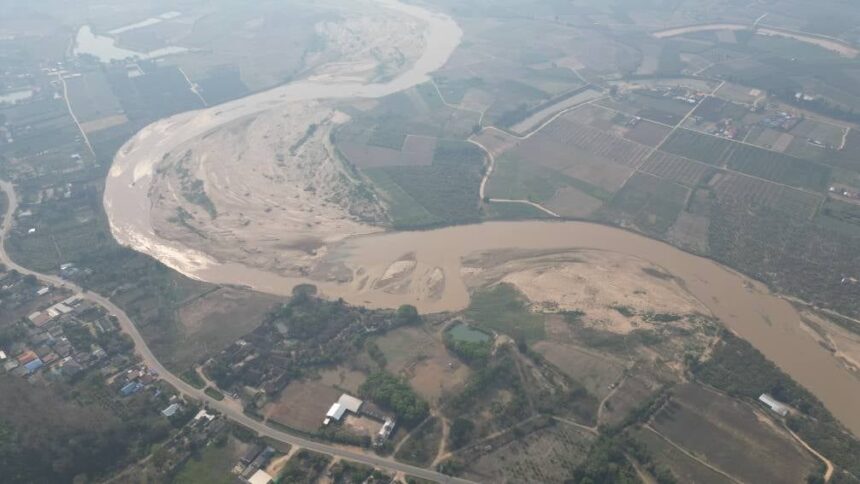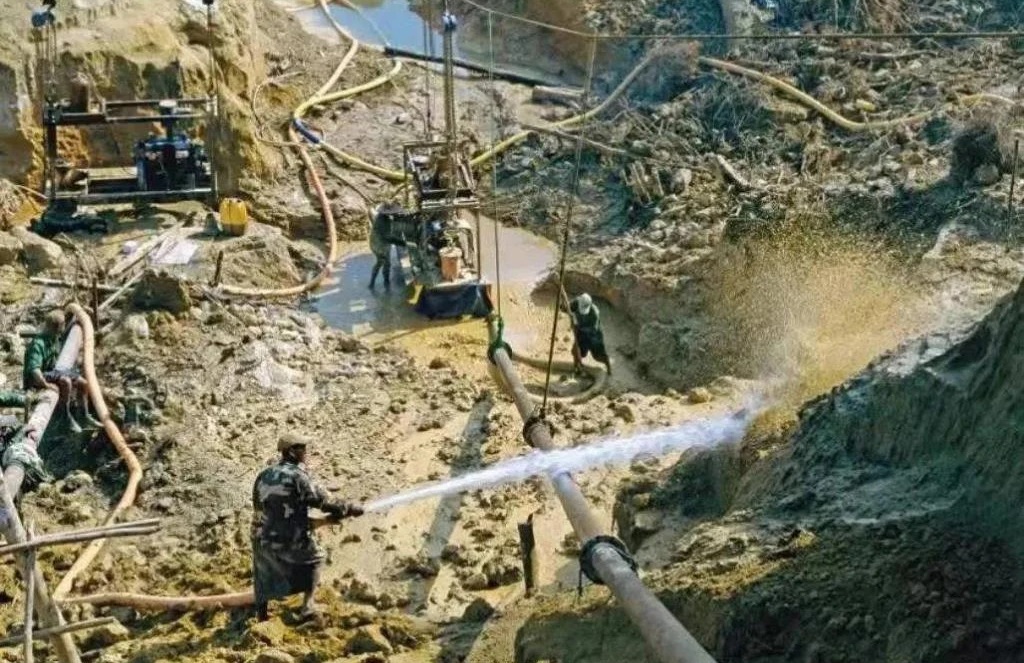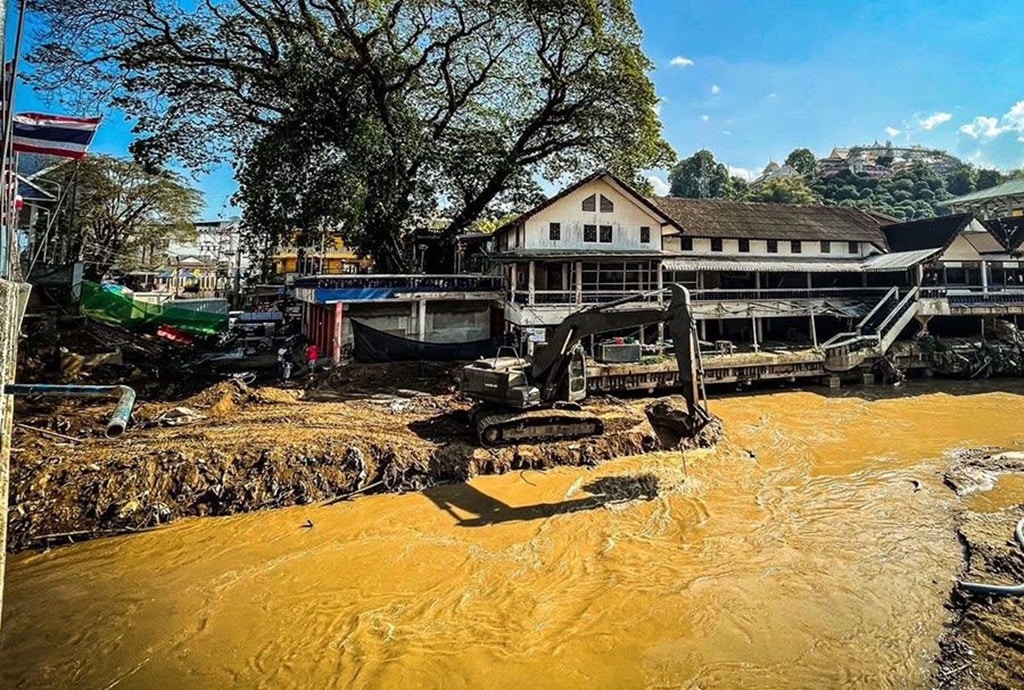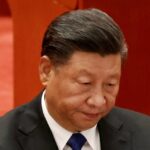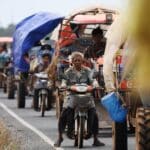CHIANG RAI — The Kok and Sai Rivers, once thriving waterways in northern Thailand’s Chiang Rai province, now carry a dangerous load. These rivers, which flow from Myanmar into Thailand, are now filled with toxic heavy metals, like arsenic, mercury, zinc, and cyanide.
These pollutants come from gold mining upstream in Myanmar’s Shan State, where controls are weak or missing. What was already an environmental mess has gotten worse with major floods, made more severe by the build-up of sediment from mining.
These floods have hit communities such as Mae Sai in Thailand and Tachileik in Myanmar hard. While Thailand rushes to reduce the damage, ongoing conflict and lack of action in Myanmar have let the problem grow. Chinese-backed mines are making things worse, harming both the environment and political stability in the region.
Polluted Waters from Shan State
The Kok and Sai Rivers start in Mong Hsat, a rugged part of eastern Shan State just over the border from Thailand. This area, once covered in forest, is now marked by open-pit gold mines. Many of these have been run by Chinese companies since 2020.
Satellite photos show more than 20 mine sites covering about 1,780 hectares, with mining stretching for kilometres along the Sai River. In Mong Kan village, pools used to process gold with chemicals like cyanide and mercury sit just metres from the river.
Recent water tests show just how bad things have gotten. In March 2025, Thailand’s Environmental and Pollution Control Office measured arsenic in the Kok River at 0.026 mg/L in Mae Ai district—over twice what’s considered safe. Mercury reached 0.076 mg/L, also well above health limits.
The Sai River showed arsenic at 0.014 mg/L, and zinc levels were 18 times higher than allowed. These metals, released during gold mining, are dangerous. Arsenic can cause cancer and skin problems, while mercury can damage nerves, especially in children.
Communities are feeling the effects. In Mong Len, a Shan State village near the mines, farmer Sai U saw his cattle collapse after drinking water from a stream that feeds into the Mekong.
“They took a few steps and fell,” he told Mekong Eye. Downstream in Thailand, residents say they get rashes and worry about long-term health. “The water burns our skin,” said Nang Ut, a mother in Na Hai Long village. “We can’t afford bottled water, so we have to use what we have.” The Shan Human Rights Foundation says more pregnant women near the mines are losing babies, likely tied to tainted water.
Gold Mining and Floods in Mae Sai, Chiang Rai and Tachileik
Pollution is only part of the story. Gold mining has also upset the Sai River’s natural flow, leading to more severe floods in Mae Sai and Tachileik. On August 14, 2024, heavy rains triggered some of the worst flooding those towns have seen, leaving behind thick mud. A Thai government study pointed to large-scale mining in Mong Hsat as a main reason, with tree loss and soil movement clogging the riverbed.
The Sai River, which used to be over 200 metres wide, is now less than 50 metres across in places because of mining runoff. Even light rainfall causes flooding, as seen on April 29, 2025, when floodwaters swamped Mae Sai’s Sa Lom Joy Market and Tachileik’s streets. Thailand’s space agency confirmed that damaged land upstream, including mining areas, made the 2024 floods much worse.
Mae Sai’s mayor, Chaiyon Srisamut, is frustrated with the situation. “Officials on the Myanmar side say they can’t do much since these areas are out of their control,” he said, pointing to ethnic armed groups like the United Wa State Army (UWSA) and Lahu militias who run much of the region. These groups often have quiet approval from Myanmar’s military government, making solutions harder to find.
Myanmar’s Ongoing Conflict Makes Change Difficult
Violence and instability have gripped Myanmar since the military coup in 2021, turning Shan State into a conflict zone. The military, or junta, is struggling to hold power against groups like the UWSA and Kachin Independence Army (KIA). Gold mining brings in money for these groups, who oversee operations in several villages.
The profits are huge. Gold and manganese are smuggled into China through Tachileik and Mong La, and the money funds weapons and supplies for armed groups. With so much at stake, these groups have no reason to stop mining. Even the military government benefits from mining in areas it controls, with allied militias providing security at mine sites.
Conflict also blocks efforts to prevent flooding. In October 2024, Thai and Myanmar officials agreed to dredge the Sai River, with Chiang Rai handling the downstream part and Myanmar responsible for the upstream stretch.
Thailand’s army started work on April 18, 2025, building a 3-kilometre flood barrier and dredging the Ruak River. Myanmar, however, has yet to start dredging, keeping the river shallow and more likely to flood.
Thailand Acts While Myanmar Stands Still
Thai authorities are stepping up their response. Chiang Rai’s provincial government has banned the use of water from the Kok and Sai Rivers for drinking or farming due to arsenic contamination.
The Royal Thai Army is building permanent and temporary embankments on the Sai River, aiming to finish before the rainy season peaks in late June 2025. In Mae Sai, officials are tearing down buildings along the river to widen it, though one property owner near Sa Lom Joy Market has slowed the work.
On the Myanmar side, little has been done. People in Tachileik say local authorities offer almost no help, forcing communities to clear mud and debris on their own. The junta’s weak control over Shan State, plus its need for mining revenue, means it’s not likely to take real action on the environment or flood prevention. “Myanmar is also working on embankments, but they haven’t used machines for dredging,” said Phasakorn Boonyalak, head of Thailand’s disaster agency.
China’s Involvement and the Push for Change
Chinese mining companies play a big role in this crisis. Since 2020, more than 23 Chinese firms have set up gold mines in Mong Hsat, often in areas run by the UWSA or militias linked to the junta. Most sites lack even basic waste controls.
Untreated water from the mines flows straight into rivers. Penchom Saetang, head of Thailand’s Ecological Restoration Foundation, says international talks should include China. “The pollution starts in Myanmar, but China is closely linked,” she said at a recent event.
Thai experts and activists are demanding action. Chainarong Setthachua, an ecology professor at Maha Sarakham University, says talks with Myanmar’s government, ethnic groups, and China are urgent. Better monitoring and tougher rules are needed. A petition to Prime Minister Paetongtarn Shinawatra calls for a water testing centre in Chiang Rai and help for affected communities.
A Region Facing a Growing Threat
What’s happening in Chiang Rai shows how environmental and political problems can link together across borders. The Kok and Sai Rivers are a main source of water for 1.2 million people in Thailand, and many more in Myanmar.
Now, these rivers are carriers of pollution and disaster. Without real cooperation and action, the damage from gold mining in Shan State will keep hurting those downstream. As Thailand tries to protect its communities, weak action in Myanmar and China’s involvement put the whole region at risk.
For now, people in Mae Sai and Tachileik brace themselves for the next flood, hoping for real solutions that cross borders as easily as the rivers do.




